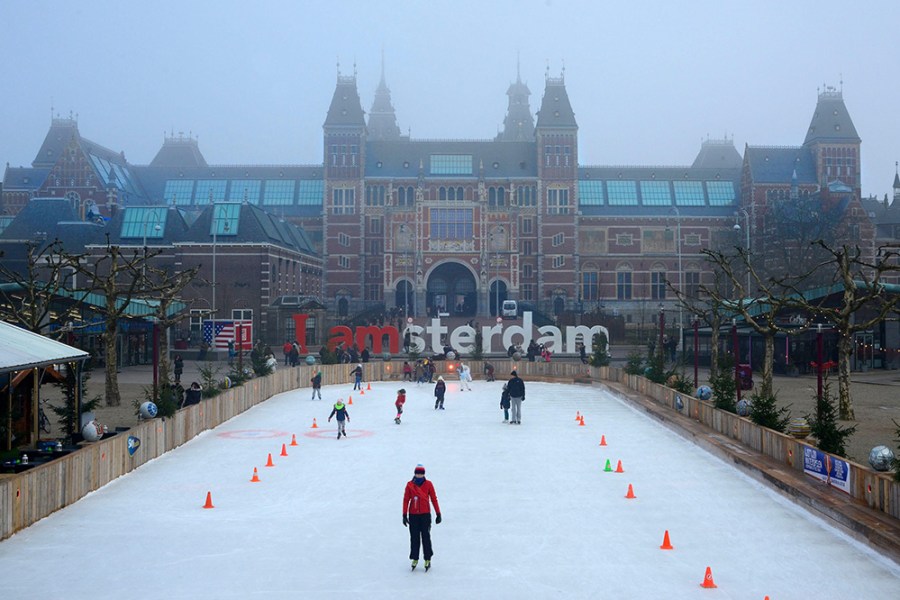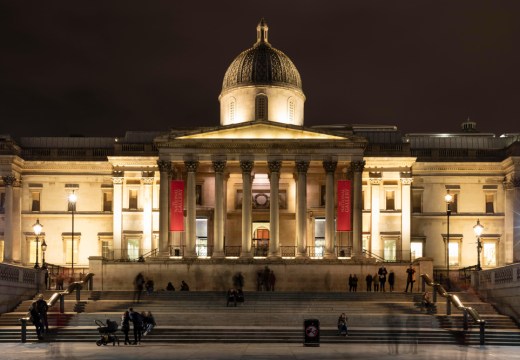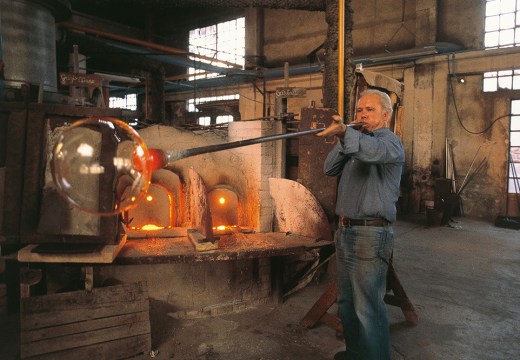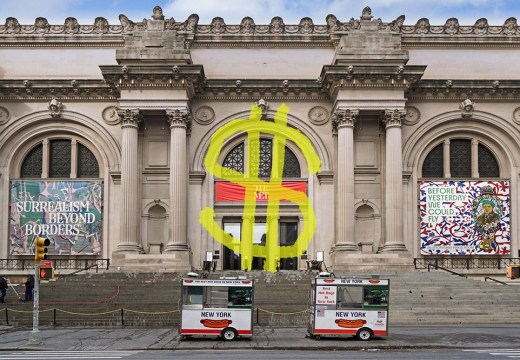At the start of this month, the European Centre for Medium-Range Weather Forecasts (ECMWF) predicted there may be a colder, drier winter in store across the continent. This comes in the wake of skyrocketing energy prices, following the European Union’s commitment to no longer use Russian gas by 2027 in response to the ongoing conflict in Ukraine – gas exports from Russia have gone from accounting for around 40 per cent of the EU’s supply in 2021 to just 9 per cent this autumn. With many people unable to afford to heat their homes, museums and galleries have been touted as welcoming centres of warmth and entertainment, but how can they meet such expectations amid their own rising costs?
The solution to this problem is perhaps obvious. ‘We need to substantially reduce our energy needs – a process that goes beyond the single season,’ says Eike Schmidt, director of the Uffizi Galleries in Florence. He explains that the institution’s energy bills have almost tripled, with July costing 185 per cent more than the previous year. The situation is similar for galleries throughout the European Union. Casper van der Kruit, a representative of the Rijksmuseum in Amsterdam, confirms their bills have also tripled while Andréa Longrais of Paris Musées expects the total bill of the institution to come to around €1m more than last year, though their budget won’t be confirmed until January.
Some ministries and councils across Europe have implemented sanctions to help institutions lower their energy output. ‘We will follow the city of Paris’s recommendation regarding lighting and heating,’ says Longrais – meaning that all 14 museums that fall under the Paris Musées umbrella will no longer illuminate their facades after 10pm, heating will only be turned on after 24 October and after that, the temperature of office spaces will be limited to 18°C and 12°C at night when sites are unoccupied. Other major cultural landmarks in the city, such as the Louvre’s glass pyramid and the Eiffel Tower, are already turning their lights off earlier in the evenings to conserve power.
A similar strategy has been put in place in Germany, where public buildings are prevented from keeping their lights on at night, except for emergencies and special events. They can also only be heated to a maximum of 19°C, while rooms and passageways must be kept unheated. Till Fellrath, co-director of the Hamburger Bahnhof in Berlin, is hopeful this won’t affect the wellbeing of visitors. ‘Experiencing the cultural offering in this way is manageable,’ he says. ‘Look at the biennale in Venice, where you don’t have any heating – people are used to having slightly colder rooms to see art in during the winter months.’
However, such regulations may have a bigger impact on the artworks the museums are able to show. ‘Controlling the climate in the museums is an essential concern with regard to the conservation of the works,’ says Longrais, adding that ‘conservation of the works will be studied so as to propose a virtuous response in terms of energy consumption’. Meanwhile, Susanna Pettersson, director of the Nationalmuseum in Stockholm, says that ‘compromising the quality of the artworks is simply not an option.’ Though she predicts the gallery is likely to also lower its temperature by two degrees and keep its facade unlit at night, she says that ‘so far, we haven’t been forced to make any changes that would compromise the safety and security of the collections.’
With no official regulations in place from the Italian government, the Uffizi is taking matters of energy conservation – and artwork preservation – into its own hands. ‘Our next step would be to lower the heating just a few degrees in the winter,’ says Schmidt. ‘We can’t lower it radically because we have extremely precious artworks that would suffer. We would need to do it at the beginning of the winter and then very, very slowly go down two or three degrees as needed. It all depends on the weather that we face.’
This uncertainty means that galleries are having to plan ahead, taking into account the potential need for larger, structural changes in the future. After all, some of Europe’s most esteemed institutions are housed in expansive, archaic buildings. The Hamburger Bahnhof, for example, is in a former train station, while the Uffizi is located in a 16th-century Florentine administrative building (uffizi meaning ‘offices’).
The Rijksmuseum began addressing these concerns last year. ‘We connected our office building and our conservation studio to the underground thermal energy storage system of the main building,’ says van der Kruit, adding that the museum was the first in the world to be given a BREEAM-NL In-Use sustainability certificate with an ‘Outstanding’ rating last year.
Paris Musées is also looking into any structural changes that can be made across its 22 buildings to improve energy efficiency. ‘We’ve called upon an energy manager to look after one museum and hope to extend its work to our network of buildings,’ says Longrais. ‘The renovation work already done and planned across the network as a whole is making the buildings more sustainable and more efficient.’
With little funding available from governments, responsibility lies on individual galleries to keep their spaces warm and their doors open. And until the large-scale building work can take place, it might be time for museums to think outside the box to survive the cold winter.
‘As part of our new architectural restoration projects, we have a geothermal component which covers about one third of our energy usage, so that helps enormously, but again this is something that we will step up and proceed with the restoration projects we can implement,’ Schmidt says of the Uffizi.
At Hamburger Bahnhof, Fellrath explains, ‘We are thinking carefully about our options: maybe tweaking storage or exhibition areas. Do we need to keep all areas of the building climatised in the same way, or are there certain types of artworks that don’t require 100 per cent museum conditions?’
He continues: ‘[Hamburger Bahnhof co-director Sam Bardaouil and I] just curated the Lyon Biennale, and one of our main venues was a 30,000 square metre empty factory building. Even if you wanted to heat or cool it down, in that building it’s impossible. Yet you can fill it with a major biennial exhibition. So perhaps there can also be some flexibility in terms of how we are thinking about exhibition building.’
While directors mull over ways in which to adapt their approaches, they must also consider the institutions’ responsibility towards visitors, whose purchases help to pay their bills. It is ‘very important for institutions to keep cultural offerings going, especially in times of crisis or potential social tensions,’ agrees Fellrath. ‘In uncertain times, people often want to gather in these kinds of spaces. These public spaces are crucial platforms where people can meet one another and exchange ideas, or as people are indeed in a position where it’s cold in their own homes, they can come somewhere where it’s not totally freezing. ’
This is why closing their doors is simply not an option – none of the institutions with which Apollo spoke was willing to reduce its opening hours in order to conserve energy. Fortunately, visitor numbers are on the up: according to Schmidt, the Uffizi’s numbers are not only back to pre-pandemic times, but surpassing their previous records with more people coming through its doors in the months of July, August and September than ever before. Meanwhile, the Rijksmuseum confirms its figures are climbing month by month.
When it comes to the energy crisis, it’s clear that the issues of rising costs and the impact on the environment are inextricably linked: reducing energy consumption not only lowers bills, but also carbon footprint. Though European museums may cope this winter, it’s clear they will need to increase their efforts to secure their futures and keep visitors coming through the doors.
Unlimited access from just $16 every 3 months
Subscribe to get unlimited and exclusive access to the top art stories, interviews and exhibition reviews.














![Masterpiece [Re]discovery 2022. Photo: Ben Fisher Photography, courtesy of Masterpiece London](http://www.apollo-magazine.com/wp-content/uploads/2022/07/MPL2022_4263.jpg)
It’s time for the government of London to return to its rightful home